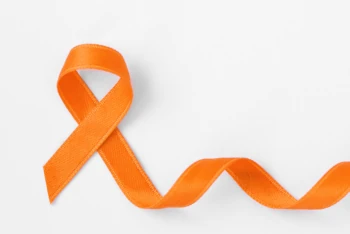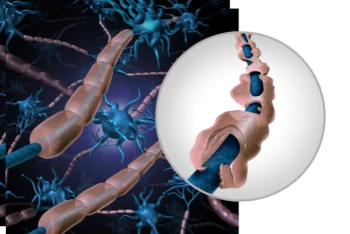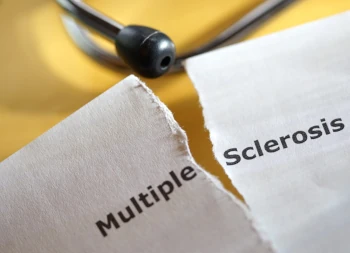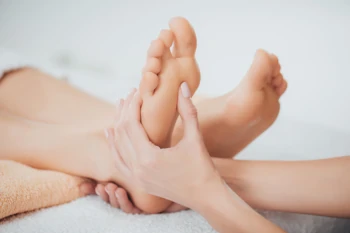Multiple Sclerosis
 Multiple sclerosis can cause a huge variation of potential symptoms, depending on which part of the nervous system is affected. The cause of MS is unknown, it is thought to be an autoimmune and neurodegenerative condition. The immune system attacks the nervous system which damages the protective myelin sheath around the nerve fibres, disrupting the signals to and from the brain and leaves the nerves exposed and more vulnerable to long-lasting damage.
Multiple sclerosis can cause a huge variation of potential symptoms, depending on which part of the nervous system is affected. The cause of MS is unknown, it is thought to be an autoimmune and neurodegenerative condition. The immune system attacks the nervous system which damages the protective myelin sheath around the nerve fibres, disrupting the signals to and from the brain and leaves the nerves exposed and more vulnerable to long-lasting damage.
Everyone’s experience with MS is different. The interruption of communication signals causes unpredictable symptoms such as numbness, tingling, mood changes, memory problems, pain, fatigue, blindness and/or paralysis, uncontrollable limb movement, altered sensation and balance. These symptoms may be temporary or long lasting. There are lots of disease modifying therapies (DMTs) licensed to treat MS.
Main types of MS
 There are three main types of MS – relapsing, primary progressive and secondary progressive. MS affects everyone differently. Even if people have the same type of MS as someone else, they are unlikely to experience the same symptoms in the same way. The MS Society funds and promotes research to develop new treatments and services for people with MS and to understand the causes of MS. They provide support to people affected by MS, and help to raise awareness, understanding, and improve care and support for all people living with MS.
There are three main types of MS – relapsing, primary progressive and secondary progressive. MS affects everyone differently. Even if people have the same type of MS as someone else, they are unlikely to experience the same symptoms in the same way. The MS Society funds and promotes research to develop new treatments and services for people with MS and to understand the causes of MS. They provide support to people affected by MS, and help to raise awareness, understanding, and improve care and support for all people living with MS.
Relapsing remitting multiple sclerosis (RRMS) is the most common form of MS. It involves periods of time when symptoms are stable and other times when there’s a flare-up or relapse. After a flare up the body can, to some extent, repair itself. The body is able to replace the damaged myelin although it tends to be thinner than unaffected myelin so messages may not travel as fast as they did before. The brain can also reroute messages to avoid an area of damage so that messages can still get through.
 There are quite a few research studies into the use of Reflexology to help with MS symptoms. Several studies have reported positive effects of reflexology in the treatment of pain in people with MS. Others have found that reflexology can improve fatigue, mood and psychological symptoms (anxiety, stress and depression). Another study concluded that reflexology helped alleviate motor, sensory and urinary symptoms in MS patients. According to a survey, reflexology is one of the most popular complementary therapies used by people with MS.
There are quite a few research studies into the use of Reflexology to help with MS symptoms. Several studies have reported positive effects of reflexology in the treatment of pain in people with MS. Others have found that reflexology can improve fatigue, mood and psychological symptoms (anxiety, stress and depression). Another study concluded that reflexology helped alleviate motor, sensory and urinary symptoms in MS patients. According to a survey, reflexology is one of the most popular complementary therapies used by people with MS.
It’s estimated that 130,000 people in the UK have MS. MS isn’t infectious or contagious so you can’t catch it or pass it on to other people. MS is the most common condition of the central nervous system affecting young adults. https://pubmed.ncbi.nlm.nih.gov/18346622/
Reflex & Back Pain
 Reflexology is a complementary therapy that involves having gentle pressure applied to the soles of your feet or your hands.
Reflexology is a complementary therapy that involves having gentle pressure applied to the soles of your feet or your hands.
It’s thought that different points on the feet are connected to different areas of the body, such as particular organs. Reflexologists believe stimulating these points can encourage natural healing.
As well as providing the calming effects of touch, reflexology can promote relaxation and improve wellbeing.
According to a survey, reflexology is one of the most popular complementary therapies used by people with MS. Although the quality of research is considered low, some studies have found that reflexology can improve pain, fatigue and mood in people with MS.
Some MS Therapy Centres offer reflexology to people with MS for a subsidised fee. Although you don’t need a referral from your GP to try this treatment, it’s advisable that you tell your GP or MS nurse about any complementary therapies you are receiving. You can find your closest centre by using our map of MS services.
Reflexology has been investigated in a variety of studies to see whether it can help with MS symptoms. In one study, 71 patients were randomised to either reflexology treatment with manual pressure on specific points of the feet and massage of the calf area, or to non-specific massage of the calf area only. 53 patients completed the study and there were significant improvements in the mean scores of paraesthesia (abnormal sensations such as pins and needles), bladder symptoms, muscle strength and spasticity.
In another study, 73 people received either reflexology or basic foot massage weekly for ten weeks, primarily as a treatment for pain. Both groups showed benefit in pain, fatigue, depression and spasms with no clear difference between reflexology and massage. The effect on pain lasted for up to 12 weeks.
More recently, three separate studies compared the effects of reflexology and relaxation on fatigue, pain and psychological symptoms (anxiety, stress and depression) in women with MS. In each of these studies, reflexology was given to 25 women with MS for four weeks, twice a week for 40 minutes. Results were collected through a questionnaire completed before, immediately after and two months after treatment. In all of the studies, reflexology was found to reduce the severity of these symptoms and was considered an effective technique.
Esmonde L, Long AF. Complementary therapy use by persons with multiple sclerosis: Benefits and research priorities. Complementary Therapies in Clinical Practice 2008;14(3):176-184. Summary (link is external) https://pubmed.ncbi.nlm.nih.gov/19825891/
Hughes CM, et al. Reflexology for the treatment of pain in people with multiple sclerosis: a double-blind randomised sham-controlled clinical trial. Multiple Sclerosis 2009;15(11):1329-1338. Summary (link is external) https://pubmed.ncbi.nlm.nih.gov/19825891/
Multiple sclerosis (MS) results in pain and other symptoms which may be modified by conventional treatment, however, MS is still not curable. Several studies have reported positive effects of reflexology in the treatment of pain, however, no randomised controlled clinical trials for the treatment of pain have been conducted within this population. The objective of this study was to investigate the effectiveness of reflexology on pain in and MS population. We randomly allocated 73 participants to receive either precision or sham reflexology weekly for 10 weeks. Outcome measures were taken pre-and post-treatment with follow-up at 6 and 12 weeks by a researcher blinded to group allocation. The primary outcome measure recorded pain using a Visual Analogue Scale (VAS). A significant (p < 0.0001) and clinically important decrease in pain intensity was observed in both groups compared with baseline. Median VAS scores were reduced by 50% following treatment, and maintained for up to 12 weeks. Significant decreases were also observed for fatigue, depression, disability, spasm and quality of life. In conclusion, precision reflexology was not superior to sham, however, both treatments offer clinically significant improvements for MS symptoms via a possible placebo effect or stimulation of reflex points in the feet using non-specific massage.
https://pubmed.ncbi.nlm.nih.gov/19825891/
In another study, 73 people received either reflexology or basic foot massage weekly for ten weeks, primarily as a treatment for pain. Both groups showed benefit in pain, fatigue, depression and spasms with no clear difference between reflexology and massage. The effect on pain lasted for up to 12 weeks.
More recently, three separate studies compared the effects of reflexology and relaxation on fatigue, pain and psychological symptoms (anxiety, stress and depression) in women with MS. In each of these studies, reflexology was given to 25 women with MS for four weeks, twice a week for 40 minutes. Results were collected through a questionnaire completed before, immediately after and two months after treatment. In all of the studies, reflexology was found to reduce the severity of these symptoms and was considered an effective technique.
Esmonde L, Long AF. Complementary therapy use by persons with multiple sclerosis: Benefits and research priorities. Complementary Therapies in Clinical Practice 2008;14(3):176-184. Summary (link is external) https://pubmed.ncbi.nlm.nih.gov/19825891/
Hughes CM, et al. Reflexology for the treatment of pain in people with multiple sclerosis: a double-blind randomised sham-controlled clinical trial. Multiple Sclerosis 2009;15(11):1329-1338. Summary (link is external) https://pubmed.ncbi.nlm.nih.gov/19825891/
Multiple sclerosis (MS) results in pain and other symptoms which may be modified by conventional treatment, however, MS is still not curable. Several studies have reported positive effects of reflexology in the treatment of pain, however, no randomised controlled clinical trials for the treatment of pain have been conducted within this population. The objective of this study was to investigate the effectiveness of reflexology on pain in and MS population. We randomly allocated 73 participants to receive either precision or sham reflexology weekly for 10 weeks. Outcome measures were taken pre-and post-treatment with follow-up at 6 and 12 weeks by a researcher blinded to group allocation. The primary outcome measure recorded pain using a Visual Analogue Scale (VAS). A significant (p < 0.0001) and clinically important decrease in pain intensity was observed in both groups compared with baseline. Median VAS scores were reduced by 50% following treatment, and maintained for up to 12 weeks. Significant decreases were also observed for fatigue, depression, disability, spasm and quality of life. In conclusion, precision reflexology was not superior to sham, however, both treatments offer clinically significant improvements for MS symptoms via a possible placebo effect or stimulation of reflex points in the feet using non-specific massage.
https://pubmed.ncbi.nlm.nih.gov/19825891/
Siev-Ner I, et al. Reflexology treatment relieves symptoms of multiple sclerosis: a randomised controlled study. Multiple Sclerosis 2003;9(4)356-361. Summary (link is external) https://pubmed.ncbi.nlm.nih.gov/12926840/
Objective: To evaluate the effect of reflexology on symptoms of multiple sclerosis (MS) in a randomized, sham-controlled clinical trial.
Methods: Seventy-one MS patients were randomized to either study or control group, to receive an 11-week treatment. Reflexology treatment included manual pressure on specific points in the feet and massage of the calf area. The control group received nonspecific massage of the calf area. The intensity of paresthesias, urinary symptoms, muscle strength and spasticity was assessed in a masked fashion at the beginning of the study, after 1.5 months of treatment, end of study and at three months of follow-up.
Results: Fifty-three patients completed this study. Significant improvement in the differences in mean scores of paresthesias (P = 0.01), urinary symptoms (P = 0.03) and spasticity (P = 0.03) was detected in the reflexology group. Improvement with borderline significance was observed in the differences in mean scores of muscle strength between the reflexology group and the controls (P = 0.06). The improvement in the intensity of paresthesias remained significant at three months of follow-up (P = 0.04).
Conclusions: Specific reflexology treatment was of benefit in alleviating motor; sensory and urinary symptoms in MS patients.
https://pubmed.ncbi.nlm.nih.gov/12926840/
Objective: To evaluate the effect of reflexology on symptoms of multiple sclerosis (MS) in a randomized, sham-controlled clinical trial.
Methods: Seventy-one MS patients were randomized to either study or control group, to receive an 11-week treatment. Reflexology treatment included manual pressure on specific points in the feet and massage of the calf area. The control group received nonspecific massage of the calf area. The intensity of paresthesias, urinary symptoms, muscle strength and spasticity was assessed in a masked fashion at the beginning of the study, after 1.5 months of treatment, end of study and at three months of follow-up.
Results: Fifty-three patients completed this study. Significant improvement in the differences in mean scores of paresthesias (P = 0.01), urinary symptoms (P = 0.03) and spasticity (P = 0.03) was detected in the reflexology group. Improvement with borderline significance was observed in the differences in mean scores of muscle strength between the reflexology group and the controls (P = 0.06). The improvement in the intensity of paresthesias remained significant at three months of follow-up (P = 0.04).
Conclusions: Specific reflexology treatment was of benefit in alleviating motor; sensory and urinary symptoms in MS patients.
https://pubmed.ncbi.nlm.nih.gov/12926840/
Soheili M, et al. Comparing the effects of reflexology and relaxation on fatigue in women with multiple sclerosis. Iranian Journal of Nursing and Midwifery Research 2015;20(2):200-204. Full article (link is external) – https://www.ncbi.nlm.nih.gov/pmc/articles/PMC4387643/
The findings from this research show that the techniques of reflexology and relaxation caused a decrease in anxiety, stress and depression in women with MS and that these symptoms decreased in the two groups of reflexology and relaxation compared to the control group, These findings reveal that the mean reduction in anxiety, stress and depression scores immediately after the interventions were similar in the experimental groups whereas the both techniques only have long-term effects on stress.
https://www.ncbi.nlm.nih.gov/pmc/articles/PMC4387643/
The findings from this research show that the techniques of reflexology and relaxation caused a decrease in anxiety, stress and depression in women with MS and that these symptoms decreased in the two groups of reflexology and relaxation compared to the control group, These findings reveal that the mean reduction in anxiety, stress and depression scores immediately after the interventions were similar in the experimental groups whereas the both techniques only have long-term effects on stress.
https://www.ncbi.nlm.nih.gov/pmc/articles/PMC4387643/
Nazari F, et al. A comparison of the effects of reflexology and relaxation on pain in women with multiple sclerosis. Journal of Complementary and Integrative Medicine. 2016 Mar;13(1):65-71. Summary (link is external) https://pubmed.ncbi.nlm.nih.gov/26581073/
The results showed that both interventions are effective on relieving pain in women with MS; however, it appears that the effect of reflexology on pain reduction is greater than that of relaxation. Hence, these two methods can be recommended as effective techniques.
https://pubmed.ncbi.nlm.nih.gov/26581073/
The results showed that both interventions are effective on relieving pain in women with MS; however, it appears that the effect of reflexology on pain reduction is greater than that of relaxation. Hence, these two methods can be recommended as effective techniques.
https://pubmed.ncbi.nlm.nih.gov/26581073/
Amatya B, et al. Non-pharmacological interventions for chronic pain in multiple sclerosis. Cochrane Database of Systematic Reviews 2018, Issue 12. Art. No.: CD012622. Full article
https://www.msfocusmagazine.org/Magazine/Magazine-Items/Posted/11-Reflections-on-Reflexology
Reflexology is the application of appropriate pressure to specific points and areas on the feet, hands, and ears. Reflexologists believe that these reflex points correspond to different body organs and systems, and that pressing them has a beneficial effect on a person’s health. This type of therapy is sometimes used by people with multiple sclerosis, and is considered to be a form of complementary and alternative medicine. If you’re thinking about trying reflexology, here’s an overview of what to expect and what not to expect:
https://www.msfocusmagazine.org/Magazine/Magazine-Items/Posted/11-Reflections-on-Reflexology
Reflexology is the application of appropriate pressure to specific points and areas on the feet, hands, and ears. Reflexologists believe that these reflex points correspond to different body organs and systems, and that pressing them has a beneficial effect on a person’s health. This type of therapy is sometimes used by people with multiple sclerosis, and is considered to be a form of complementary and alternative medicine. If you’re thinking about trying reflexology, here’s an overview of what to expect and what not to expect:
- MS treatment guidelines from the American Academy of Neurology provide evidence-based recommendations on many CAM practices, including reflexology: “Reflexology is possibly effective for reducing MS-associated paresthesia over 11 weeks…. Data are inadequate to support or refute the use of reflexology for pain, HRQOL [health-related quality of life], disability, spasticity, fatigue, cognition, bowel/bladder function, depression, anxiety, or insomnia in MS.” Paresthesia is an abnormal sensation such as tingling, tickling, pricking, numbness or burning.
- One study conducted in people with MS suggests reflexology may improve bladder difficulties, sensory problems, and muscle stiffness. However, more research needs to be done in order to determine whether reflexology has definite therapeutic effects.
- Reflexology should be a supplement to front-line medical community therapy and care, not a solution or substitute to professional medical care. Many people with MS report that reflexology has helped them and many others say it seems to have had no effect at all.
- Choose a trained reflexologist to perform the reflexology treatment. Those who practice reflexology may also be chiropractors, massage therapists, and physical therapists.
- Though reflexology is more than just massage, a typical session often begins with a foot massage and is followed by stimulation of the reflex points on the feet, hands, and/or ears.
- Reflexologists divide the body into ten equal vertical zones, five on the right and five on the left. Foot and hand charts help guide the reflexologists as they apply pressure to specific areas. Each foot, hand, and ear is associated only with the body parts and organs on its half of the body.
- Sometimes the reflexologist uses items such as rubber bands, sticks of wood, rubber balls, or other materials to apply the therapy.
- Reflexologists apply therapy to help release stress, with a goal of allowing the body to heal and regenerate. There are several theories about how this process works.
- According to one theory, the reflexologist’s application of pressure to feet, hands, or ears sends a calming message from the peripheral nerves in these extremities to the central nervous system, which in turn signals the body to adjust the tension level. This enhances overall relaxation, brings internal organs and their systems into a state of optimum functioning, and increases blood supply (which brings additional oxygen and nutrients to cells and enhances waste removal). It positively affects the circulatory, respiratory, endocrine, immune, and neuropeptide systems in the body.
- Another theory suggests there is a “vital energy” in the human body. If stress is not addressed, it leads to congestion of energy, which in turn causes bodily inefficiencies, which can lead to illness. According to this theory, reflexology helps keep the energy flowing. Reflexologists often refer to one’s Qi, which is a term meaning “material energy”, “life force”, or “energy flow.” Qi is the central underlying principle in traditional Chinese medicine and Chinese martial arts.
- Reflexology is generally well tolerated, with no known serious side effects. People with foot conditions, such as gout, ulcers, vascular disease, and arthritis, should approach this treatment with caution. Reflexology is usually not considered to be painful.
Thank you for reading – Multiple Sclerosis. I hope you enjoyed it, if you would like more please follow me on Facebook and Instagram. Or if you would like to get in touch please Contact Me.
See you soon,
Sally
See you soon,
Sally
